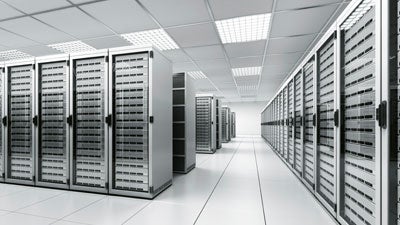
A data center is more than just a place to stash your servers. It’s a critical part of your business. If you’re creating a data center design from scratch, it’s important to think a little bit about how you’re going to lay it out before you get building. Here are a few areas to think about:
1. Create a Disaster Plan
Let’s face it: extreme weather can happen. From hailstorms, hurricanes, thunderstorms, and to even the occasional snowstorm, your facility can take a beating. It’s important to plan for what to do when, not if, the unthinkable happens. Because lets face it, the unthinkable will happen! That includes backups, emergency powers, and business continuity plans.
Related Article: Disaster Recovery and Other Happy Subjects
2. Have Strong Backups
Speaking of backups, it’s important to incorporate a backup system into your data center design. Choose a medium that works for you, whether it’s tape, hard drives or even cloud service and test them well before you will need them. For starters, try restoring from backups once in a while. You have regular fire drills to make sure everybody knows what to do in case of a fire, right? Why not make sure your IT staff can recover from a disaster or even a mislaid command easily?
3. Pay Attention to Data Center Cabling
We’ve all had the experience of trying to figure out what cable goes where, whether it’s on a PC or a home theater system. Now multiply that by the hundreds of machines in a large data center and you can see what kinds of problems your data center cabling can create.
Fortunately, there are easy ways to keep track of your cables, even if you have hundreds of them snaking through your data center. Just make sure you measure them, label them, and document them using a facility diagram. It’s also a good idea to color-code them. You don’t have to go as far as Google does, but you should have a color scheme and stick to it.
This might seem silly, but you should also test your data center cabling as you connect them. There’s nothing more frustrating than spending hours on a problem only to find that a mislabeled or broken cable was the culprit. It sounds silly, but it happens even to experienced IT people.
4. Choose Your Location
The mantra of real estate is “location, location, location.” It’s the same with data centers. You should think of the physical location when building a data center. For example, Google has strategically placed their data centers with efficiency in mind. In Finland, the company uses seawater to cool its servers, integrating with outside environments. You might have access to seawater but setting up shop near possible storm surge areas isn’t necessarily a good idea in some places. But when laying out your data center design you should think about the surrounding area and how you can use it to your advantage.
Since the weather can get extreme at times, you should consider having an alternate data center if you really value your business. Ideally, this should be in another city or state so the same storm doesn’t wipe out both of your locations.
5. Consider the Future
All of these things you’ve seen are part of planning for the future. For example, having well-labeled, color-coded data center cabling makes it easier to add and upgrade new equipment as your needs change. But that’s not all! As global warming continues, we can expect to see more extreme weather, so having good backup plans, generators, and other kinds of backup power means that you’ll be able to stay up and serve your customers in the case of disaster.
The needs of your data center will change along with your customers, and it’s important to be able to keep up. If it’s easy to make small, incremental changes over time, but you should be able to please your customers and stay in business for years to come if you follow the rest of these tips.
This article was originally published by TTI Houston
Published: May 7, 2015
3131 Views
3131 Views












